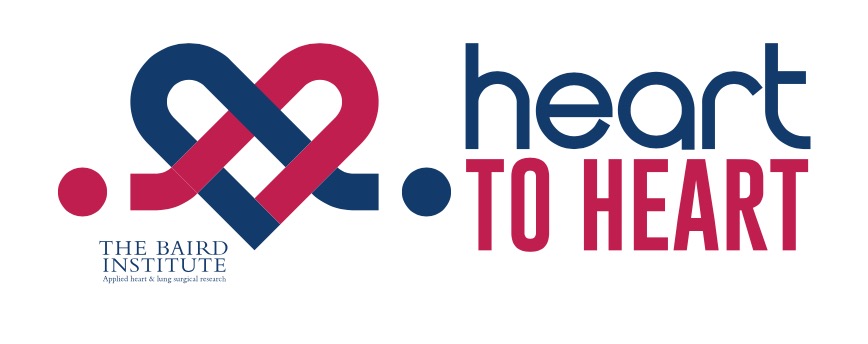Artery Regeneration
Principal Investigator:
Dr Robert Hume
Co-Investigators:
Professor Paul Bannon, Associate Professor Sean Lal, Dr Timothy Shiraev, Mr Wade Bocking
Collaborators:
Professor Anthony Weiss, Dr Ziyu Wang
The heart pumps blood to the body’s organs via its arteries. Multiple diseases can cause irreversible damage to these blood vessels and can be life threating. A common treatment is to replace damaged arteries with a synthetic substitute. Unfortunately, these are made from materials that are too rigid. These stiff replacements can cause abnormal blood flow, leading to a range of health issues. They also are prone to blockages, which can be incredibly dangerous to the patient, leading to at a minimum revision surgery and at worst amputations or even death.
To address the failings of current artery replacements we have formed a collaboration with biomaterials experts Professor Tony Weiss and Dr Ziyu Wang at the University of Sydney. Together, we have developed a blood vessel replacement made from materials with a similar stiffness to healthy arteries. This replacement is also degradable, encouraging new healthy tissue to regrow and replace it as it degrades (artery regeneration). Thus far, in laboratory experiments our current prototype has outperformed the materials currently used in the clinic today, which is incredibly promising. We are currently refining and improving our artery replacement, aiming in the future to progress the findings into a clinical trial.
If successful, our replacement could treat a wide range of artery diseases and significantly improve the quality of life of millions of patients.
Cardiac Regeneration
Principal Investigator:
Dr Robert Hume, Associate Professor Sean Lal
Co-Investigators:
Professor Paul Bannon, Dr Cassandra Malecki, Ms Deepshikha Shreya Mondal
Collaborators:
Dr Max Cumberland (WIMR), Professor James Chong (WIMR), Professor Nathan Palpant (University of Queensland), Dr Woo Jun Shim (University of Queensland), Professor Michelle Peckham (University of Leeds, UK)
Heart failure is incurable, irreversible and the leading cause of death worldwide, with one Australian dying every 3 hours, 50-75% of patients dying within 5 years of diagnosis and at a cost of $2.7 billion to the Australian economy. The most common cause of heart failure is plaque build-up in the arteries that supply blood to the heart muscle, known as the coronary arteries. If this plaque ruptures, it can cause a sudden blockage in the coronary arteries, known as a heart attack. All the heart muscle below this blockage is now starved of blood and oxygen and causes the death of millions of heart muscle cells (cardiomyocytes). This dead muscle is then replaced with scar tissue, causing the heart to pump blood less effectively.
It was previously believed that human heart muscle cells cannot replicate and divide to replace dead tissue (cardiac regeneration). However, we have shown that heart muscle cells show a small increase in their ability to replicate following a heart attack. Unfortunately, this capacity to regenerate new cells is insufficient to replace the millions of heart muscle cells that die following a heart attack. However, if this regenerative potential of the human heart could be amplified or enhanced, the failing heart could repair itself by regrowing new muscle. We have developed a number of laboratory models that imitate the environment observed in patients following a heart attack and we will use these models to test new therapies that could potentially regenerate the failing heart.
By enabling patients to regenerate heart muscle, our new therapies could potentially restore normal function to their failing hearts. As such, we aim to reverse the irreversible, positively impacting the lives of millions of heart failure patients and saving billions of dollars for the Australian economy.
Age Related Diseases of the Heart and the Aorta
Principal Investigator:
Associate Professor Sean Lal
Co-Investigators:
Dr Cassandra Malecki, Dr Robert Hume, Mr Lakshay Seth, Mr Matthew Taper
Collaborators:
Dr Giovanni Guglielmi (UMelb, USyd), A/Prof Vijay Rajagopal (UMelb), A/Prof Mark Larance (USyd)
The world’s population is rapidly ageing. Ageing is the number one risk factor for myocardial infarction (heart attack), heart failure, and aortic aneurysm (rupture) – taken together, these diseases are our number one killer. However, there is currently no biological understanding of how the normal human heart and aorta change with age. This is due to a lack of human heart and aortic samples being available to study. Until we understand what constitutes normal ageing of the heart and aorta at the molecular level, then can we only understand how ageing relates to heart and aortic disease. This is the key to then develop therapies to reverse the pathological (detrimental) effects of ageing on the heart and the aorta and prevent these diseases in the first place.
To solve these issues, our team of surgeons, clinicians and research scientists can utilise the novel heart and aortic tissues from the Sydney Heart Bank (SHB). The SHB is the oldest and largest collection of cryopreserved (frozen) human heart and human aortic samples in the world. It is entirely not-for-profit, with a mission statement to foster world-wide collaborative research into understanding human heart and aortic diseases. It is entirely supported by both the Faculty of Medicine and Health at the University of Sydney and The Baird Institute.
The SHB houses the only collection of normal (non-diseased) human hearts and aortic tissue across the lifespan. Hence, our goal is to create the first molecular study of human heart and aortic ageing, whereby we analyse every gene, protein, and enzyme in these samples to create an online, freely available resource of human heart and aortic ageing for Australian and international researchers. We will use this data to then develop and test molecular therapies to potentially reverse age-related changes in the heart and the aorta, thereby preventing age related heart and aortic disease.
Restoring the Heart's Energy: A New Approach to Treating Heart Failure
Principal Investigator:
Professor John O’Sullivan
Co-Investigators:
A/Prof Sean Lal Prof Paul Bannon, Dr Yen Chin Koay, Dr Yann Huey Ng, Dr Xiao Suo Wang, Prof David Kaye, Dr Abhipree Sharma, Dr Salva Yurista, Dr Yas Kamaladasa
When someone experiences heart failure, their heart becomes weak and struggles to pump blood properly. One way to think of it is like an engine running out of fuel – the heart simply doesn’t have the energy it needs to work well.
Current treatments for heart failure focus on reducing the workload on the heart, but don’t directly address the heart’s energy shortage. That’s where this research comes in.
Our team is exploring a naturally occurring molecule in the body called NAD+, which plays a key role in producing energy inside cells. In heart failure, NAD+ levels are often low. We’ve found that boosting NAD+ levels may help the heart generate more energy and recover its strength.
In this project, we’re looking closely at how NAD+ helps the heart muscle contract and relax, two vital actions that keep blood flowing. One key player in this process is a protein called SERCA, which helps manage calcium inside heart cells and uses a large portion of the heart’s energy. When SERCA isn’t working properly, the heart can’t beat effectively.
We’ve discovered that in heart failure, SERCA becomes “sticky” and less efficient due to a chemical change (called acetylation). NAD+ may help reverse this by activating natural repair processes in the heart, improving SERCA function and ultimately helping the heart beat more effectively.
We’ve also made two recent breakthroughs in human hearts: 1) The heart can generate its own rescue fuel called ketones, and NAD+ boosts this capacity; 2) The heart has an inbuilt rescue system via a molecule called citraconate, which is activated in heart failure – we are working on ways to amplify this.
This research could lead to a new way of treating heart failure by restoring the heart’s energy supply and improving its ability to function, rather than just treating symptoms.






